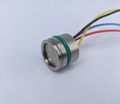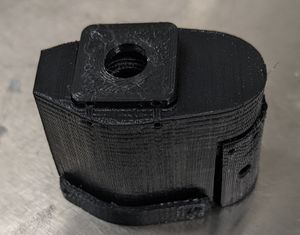Difference between revisions of "Depth Sensor v2"
| Line 13: | Line 13: | ||
== 19th March 2020 == | == 19th March 2020 == | ||
| − | To allow for calibration and testing of the depth sensor, a 3D-printed housing was required. We also incorporated a EC mount into the design. | + | To allow for calibration and testing of the depth sensor, a 3D-printed housing was required. We also incorporated a EC mount into the design. The design had to be waterproof around the depth sensor, the EC prongs and the cable, each requiring o-rings to prevent water passage. It also had to have the depth sensor and EC prongs as close to the bottom of the probe as possible to provide reliable readings at a minimal depth of water. Multiple iterations had to be printed to ensure the tolerances of the 3D printer were accounted for. |
| − | + | [[File:Case v2.jpg|thumb|left|Tolerances were still inaccurate]] | |
| − | Case | ||
| − | |||
| − | |||
Revision as of 01:32, 20 March 2020
6th March 2020
Taking measurements of water pressure can be used to calculate the depth at which the reading was taken. The sensor compares the pressure of the water to the atmospheric pressure allowing it to output a relative reading of the water pressure. This permits us to take an reasonably accurate measurement of the water depth.
We have two similar depth sensors that output either an analog or i2c signal both of which can be received by most micro-controller devices.
19th March 2020
To allow for calibration and testing of the depth sensor, a 3D-printed housing was required. We also incorporated a EC mount into the design. The design had to be waterproof around the depth sensor, the EC prongs and the cable, each requiring o-rings to prevent water passage. It also had to have the depth sensor and EC prongs as close to the bottom of the probe as possible to provide reliable readings at a minimal depth of water. Multiple iterations had to be printed to ensure the tolerances of the 3D printer were accounted for.



